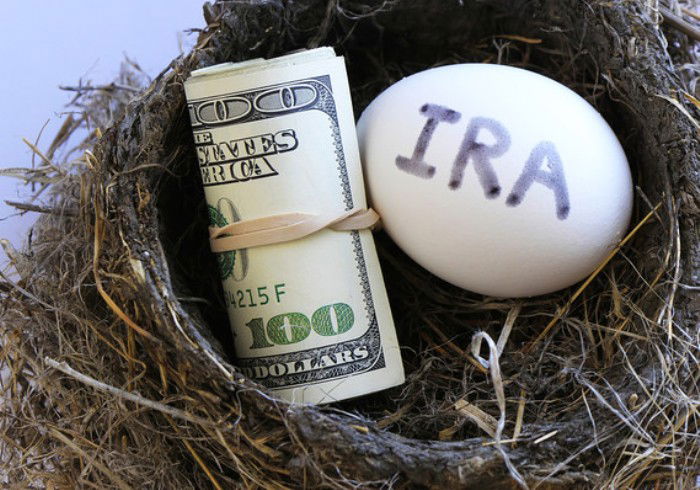An individual retirement account (IRA) is one of the simplest and most effective ways to save for the future. The tax advantages can give your money more room to grow—but only if you’re using the right account. Some providers make it easy with low fees and smart tools. Others weigh you down with high costs or limited options.
If you’re serious about retirement, choosing the right IRA provider is just as important as making consistent contributions. We’ve reviewed dozens of options to bring you the best IRA accounts for 2025.
8 Best IRA Accounts
Your ideal IRA depends on how hands-on you want to be. Some investors prefer to manage every trade themselves. Others want to automate everything and let the platform take the lead. Fees, investment choices, and customer support all play a role.
Here are eight IRA accounts that stand out for different investing styles and goals.
1. Wealthfront
- Best for: Hands-off investors who want smart automation and planning tools
- Fees: 0.25% annual management fee
- Minimum investment: $500
2. Robinhood
- Best for: Active traders who want a simple, mobile-first IRA
- Fees: $5/month for Robinhood Gold (optional)
- Minimum investment: $0
3. Charles Schwab
- Best for: Beginners and investors who want strong customer support
- Fees: $0 for self-directed trading, no annual IRA fee
- Minimum investment: $0
4. Fidelity Investments
- Best for: All-around investors who want flexibility and low costs
- Fees: $0 for self-directed, 0.35% for managed portfolios over $25,000
- Minimum investment: $0
5. Public
- Best for: Long-term investors who want access to alternative assets
- Fees: $0 for standard investing, fees vary on alternative assets
- Minimum investment: $0
6. SoFi
- Best for: New investors who want automated investing and extra perks
- Fees: $0 for managed portfolios
- Minimum investment: $0
7. Betterment
- Best for: Investors who want automation plus access to human advice
- Fees: 0.25% for Digital plan, 0.40% for Premium
- Minimum investment: $0 for Digital, $100,000 for Premium
8. Interactive Brokers
- Best for: Experienced investors who want advanced tools and global access
- Fees: $0 account fee, trades from $0
- Minimum investment: $0

Types of IRAs and How They Work
Not all IRAs are the same. The one you choose affects how your money grows, how it’s taxed, and when you can access it. Here’s a quick breakdown of the four most common types—and who they’re best for.
Traditional IRAs
A traditional IRA lets you save for retirement with pre-tax dollars. In most cases, your contributions are tax-deductible, which can lower your taxable income for the year.
You’ll pay taxes later when you withdraw the money in retirement. That makes this a smart choice if you think you’ll be in a lower tax bracket down the road.
Roth IRAs
A Roth IRA flips the tax benefits. You pay taxes now, not later. That means your withdrawals in retirement are completely tax-free—as long as they’re qualified.
Roth IRAs are a good fit if you expect your income and tax rate to rise over time. You also won’t have to worry about required minimum distributions during your lifetime.
SEP IRAs
A Simplified Employee Pension (SEP) IRA is designed for self-employed people and small business owners. Only employers can contribute, but the annual limits are much higher than a traditional IRA.
It’s easy to set up, and contributions are tax-deductible. That makes it a powerful tool for entrepreneurs who want to lower their taxable income and save more each year.
SIMPLE IRAs
A Savings Incentive Match Plan for Employees (SIMPLE) IRA is for small businesses with 100 or fewer employees. Both the employee and employer can contribute, and employers are required to make contributions.
SIMPLE IRAs are easier to manage than 401(k) plans and have higher limits than traditional or Roth IRAs. They’re ideal for small businesses that want a low-maintenance retirement option for their team.
How to Choose the Best IRA Account
Not all IRA accounts work the same way. Before you open one, make sure the provider matches your investment style, budget, and long-term goals.
Here’s what to look for:
- Fees: Look for providers with no annual account fees, free trades, and low-cost funds. High fees can shrink your returns over time.
- Investment options: A strong IRA account should offer access to index funds, mutual funds, stocks, bonds, and exchange-traded funds. The more choices you have, the easier it is to build a solid portfolio.
- Minimum balance: Some providers let you start with $0. Others require a few hundred—or a few thousand—dollars to open an account. If you’re just starting out, check for low or no minimums.
- Customer support: If you’re new to investing, good support matters. Look for providers with helpful reps, user-friendly platforms, and solid educational tools.
- Automation and extras: Some platforms offer robo-advisors, financial planning, or even career coaching. These can be helpful if you want to automate your investing or get broader financial advice.
- Tax treatment: Traditional and Roth IRAs work differently when it comes to taxes. Pick the one that aligns with your current income and how you expect that to change in retirement.
The best IRA account is one you’ll actually use—and stick with. Focus on low fees, flexible options, and features that match how you like to manage your money.
How to Open an IRA Account
Opening an IRA is easier than you might think. It works a lot like setting up a regular brokerage or savings account—and you can do it entirely online in just a few steps.
- Pick your IRA provider: Decide whether you want to use an online broker, robo-advisor, or traditional investment firm. Look for one that fits your investing style and fee preferences.
- Choose your IRA type: Pick between a traditional or Roth IRA based on your current income, expected future income, and tax goals. If you’re self-employed, a SEP or SIMPLE IRA might be a better fit.
- Open your account: Go to the provider’s website and select “open an IRA.” You’ll need to enter some personal info like your Social Security number, employment details, and address.
- Fund your account: You can add money by linking your bank account or rolling over funds from another retirement plan. Be sure to stay within the annual IRA contribution limits set by the IRS.
- Select your investments: Some platforms let you pick individual stocks or funds. Others create a diversified portfolio for you automatically. Choose the option that matches how involved you want to be.
- Set up automatic contributions: Automating your contributions makes it easier to stay consistent—and consistency is what helps your balance grow.
Once your account is open, check in regularly. You might want to rebalance your investments or adjust your contributions as your income or goals change.
Mistakes to Avoid With Your IRA
A good IRA can help you build serious retirement savings—but a few common missteps can cost you. Here’s what to watch out for:
- Waiting too long to open an account: The sooner you start, the more time your money has to grow. Even small contributions can add up with compounding.
- Not contributing enough: Try to hit the annual limit if you can. If not, set a goal to increase your contributions each year.
- Paying too much in fees: High-fee funds can quietly drain your returns. Look for low-cost index funds and keep an eye on expense ratios and transaction fees.
- Ignoring tax strategy: Traditional and Roth IRAs have different tax advantages. Think about your current income and what your tax rate might be in retirement.
- Overlooking income limits: Roth IRAs have income caps. If you earn too much to qualify, you might need to look at a traditional IRA or a backdoor Roth conversion.
- Forgetting to update beneficiaries: Life changes fast. Review your beneficiary choices after marriage, divorce, or the birth of a child to keep everything up to date.
Final Thoughts
The best IRA for you comes down to two main things: how involved you want to be and how much you want to pay. If you like managing your own trades, go with a provider that offers strong tools, free trades, and flexible investment options. If you’d rather go hands-off, look for an IRA with automated portfolios and low advisory fees.
Either way, starting early and sticking with it is what really matters. You can always move your money later, but choosing the right account from the start helps avoid fees and headaches down the line.
Set it up right, stay consistent, and you’ll be in good shape when retirement rolls around.
Frequently Asked Questions
What is the maximum contribution limit for IRAs in 2025?
For 2025, the maximum you can contribute to a traditional IRA or Roth IRA is $7,000 if you’re under age 50. If you’re 50 or older, you can contribute up to $8,000, thanks to a $1,000 catch-up allowance. These limits apply to your combined contributions across both types of IRAs—not to each one separately.
Can I have both a traditional IRA and a Roth IRA?
Yes, you can have both a traditional IRA and a Roth IRA. However, the total amount you can contribute to both accounts combined cannot exceed the annual contribution limit.
What is a backdoor Roth IRA?
A backdoor Roth IRA is a strategy for people whose income exceeds the Roth IRA income limits to still contribute to a Roth IRA. It involves contributing to a traditional IRA and then converting that contribution to a Roth IRA. There may be tax implications with this strategy, so it’s recommended to consult a certified financial planner or tax advisor.
Can I withdraw money from my IRA before retirement age?
Yes, but early withdrawals usually come with income tax and a 10% penalty. Some exceptions apply, like using the money for qualified education costs or a first-time home purchase. Make sure you understand the rules before taking out funds early.
Are there any penalties for not taking distributions from my IRA?
Yes, there are penalties for not taking required minimum distributions (RMDs) from your traditional IRA. The penalty is 50% of the amount you should have withdrawn but didn’t. Roth IRAs, on the other hand, do not require minimum distributions during the owner’s lifetime.











